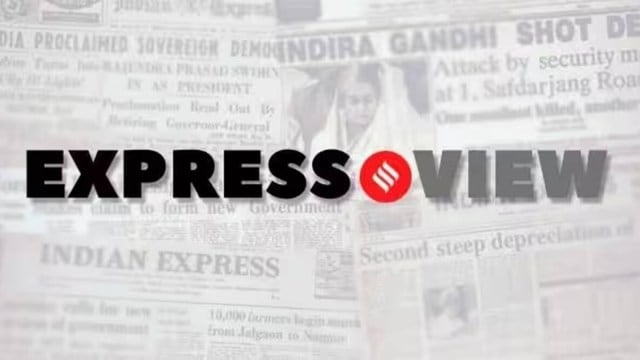
On Wednesday, ratings agency S&P Global changed its outlook on India from stable to positive. The revised outlook reflects its assessment that “policy stability, deepening economic reforms and high infrastructure investment” will help sustain the Indian economy’s long-term growth prospects. The change in outlook comes only a few days before the results of the ongoing national elections are declared. While there are differences in the manifestos and public rhetoric of the two broad political formations contesting this election, which may well translate into differences in policies, the ratings agency says that “regardless of the election outcome”, “broad continuity in economic reforms and fiscal policies” can be expected.
The change in outlook now raises the possibility of a ratings upgrade over the next two years. The current rating of BBB — is the lowest investment grade rating. As per S&P, an upgrade hinges on two metrics: Bringing down general government debt, of Centre and states, to below 7 per cent of GDP and ensuring that inflation remains low. On both fronts, there has been improvement in recent years. The general government deficit, which had risen sharply during the pandemic year of 2020, has since declined. The Centre’s fiscal deficit has fallen from 9.2 per cent of GDP in 2020-21 to 5.8 per cent in 2023-24, and over the same period, the states’ deficit has fallen from 4.1 per cent to 3.1 per cent (budget estimate). As per the agency’s projections, the combined deficit is expected to fall from 7.9 per cent of GDP in fiscal 2025 to 6.8 per cent by fiscal 2028. Alongside, the general government debt is expected to fall to 81 per cent of GDP by fiscal 2028. (The ratings agency puts recapitalisation bonds on the general government balance sheet and includes liabilities of Indian Railway Finance Corp as government debt). Inflation, too, has been on a downward trajectory. As per the National Statistical Office’s most recent estimate, retail inflation had fallen to 4.83 per cent in April. A study from economists at RBI expects inflation to see a “durable alignment with the target” in the second half of the year.
However, there are downside risks. The ratings agency says that the outlook could be revised back to stable if there is an “erosion of political commitment” in ensuring that public finances remain sustainable. The next government must therefore continue on the path of fiscal consolidation, commit to bringing down the deficit below 4.5 per cent of GDP by 2025-26. It must also provide a fresh roadmap to lower the deficit further to 3 per cent. Alongside, it must ensure that the thrust on capital spending is sustained. As S&P notes, it is “public investment and consumer momentum” that will help sustain growth in the near term.

